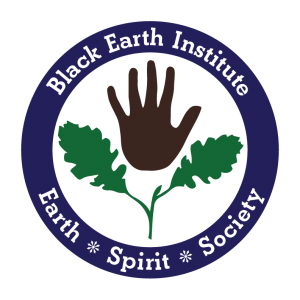About The Black Earth Institute
Black Earth Institute, the publisher of About Place Journal, is a progressive think-tank dedicated to re-forging the links between art and spirit, earth and society. Black Earth Institute encourages awareness of the arts as a means of promoting a progressive, inclusively spiritual and environmentally aware society. The organization gathers artists and audience members to further understanding of the historical role of the artist as bringing forth wisdom from beyond the self.
Black Earth Institute promotes the oracle and orator, griot and druid, scientist and prophet, priest and priestess. We oppose the current definition of art as a commercial product derived from exploitation of personality and rewarded by celebrity and market status. We uphold the arts as a sacred path to wisdom, and we celebrate the artist as a seeker whose work benefits the entire human community.
 Our Emblem
Our Emblem
The emblem of Black Earth Institute begins with a circle that represents both the earth and the human community. Such circular emblems were used in ancient Greece as symbols of devotion to the localized earth goddesses called nymphs.
Within the circle is a hand held open in greeting, a common symbol in many cultures for human connection. In the Middle East, it is the Hand of Fatima (Arab culture) and the Hand of Miriam (Jewish tradition), although its use as a sacred symbol predates both Islam and Judaism; called the hamsa, the open hand represents hopes for peace in the region. In the Americas, the hand crafted of shiny mica was a symbol, whose meaning is unknown, for the ancient Hopewell moundbuilder culture.
Finally, the emblem includes two leaves of burr oak, native to the American prairies and able to survive prairie fires because of its thick bark. Together, these images speak to us of intercultural connection, respect for the environment, and acknowledgement of the sacred.
Land Acknowledgement
The editors, creators, and publisher of About Place Journal, The Black Earth Institute, are all located in different parts of what is called North America, on lands that were, through various means of violence and treachery, taken from the Original Peoples who have lived on these lands for millennia. We acknowledge that no geography of justice will be possible without real and substantial reparations to Indigenous Peoples, recognition of their original lands and Treaty rights, and the ecological restoration of Indigenous geographies.
